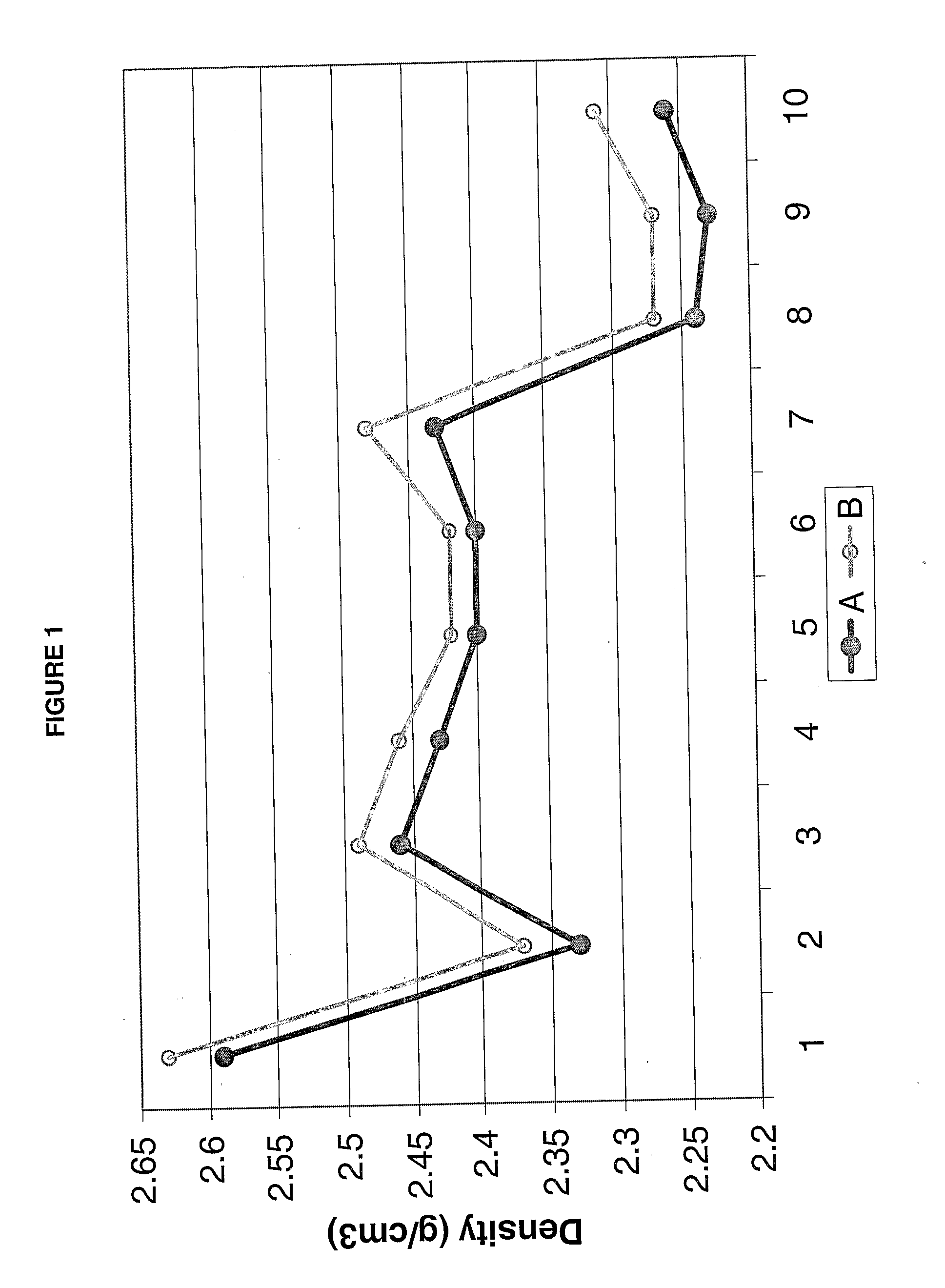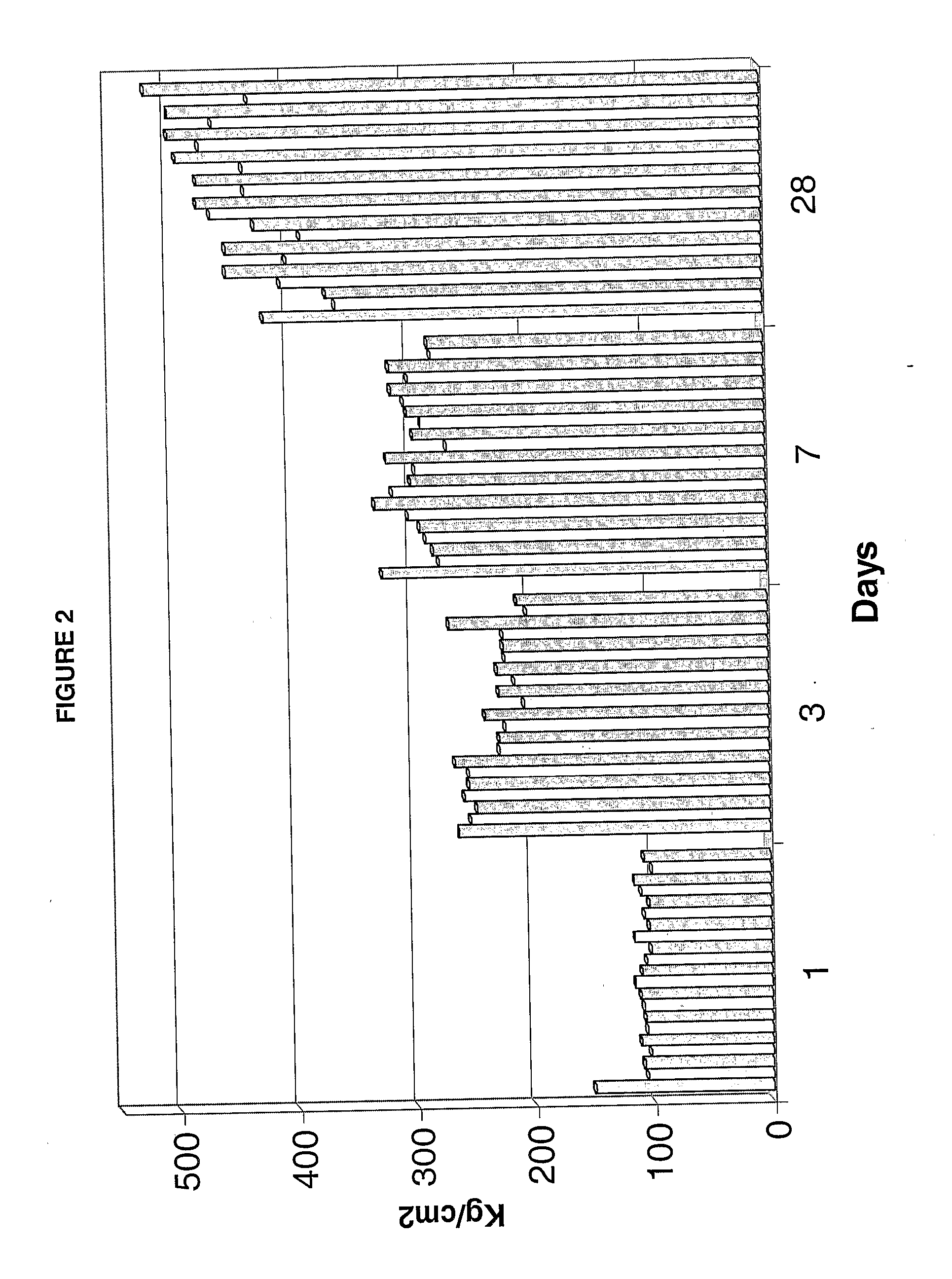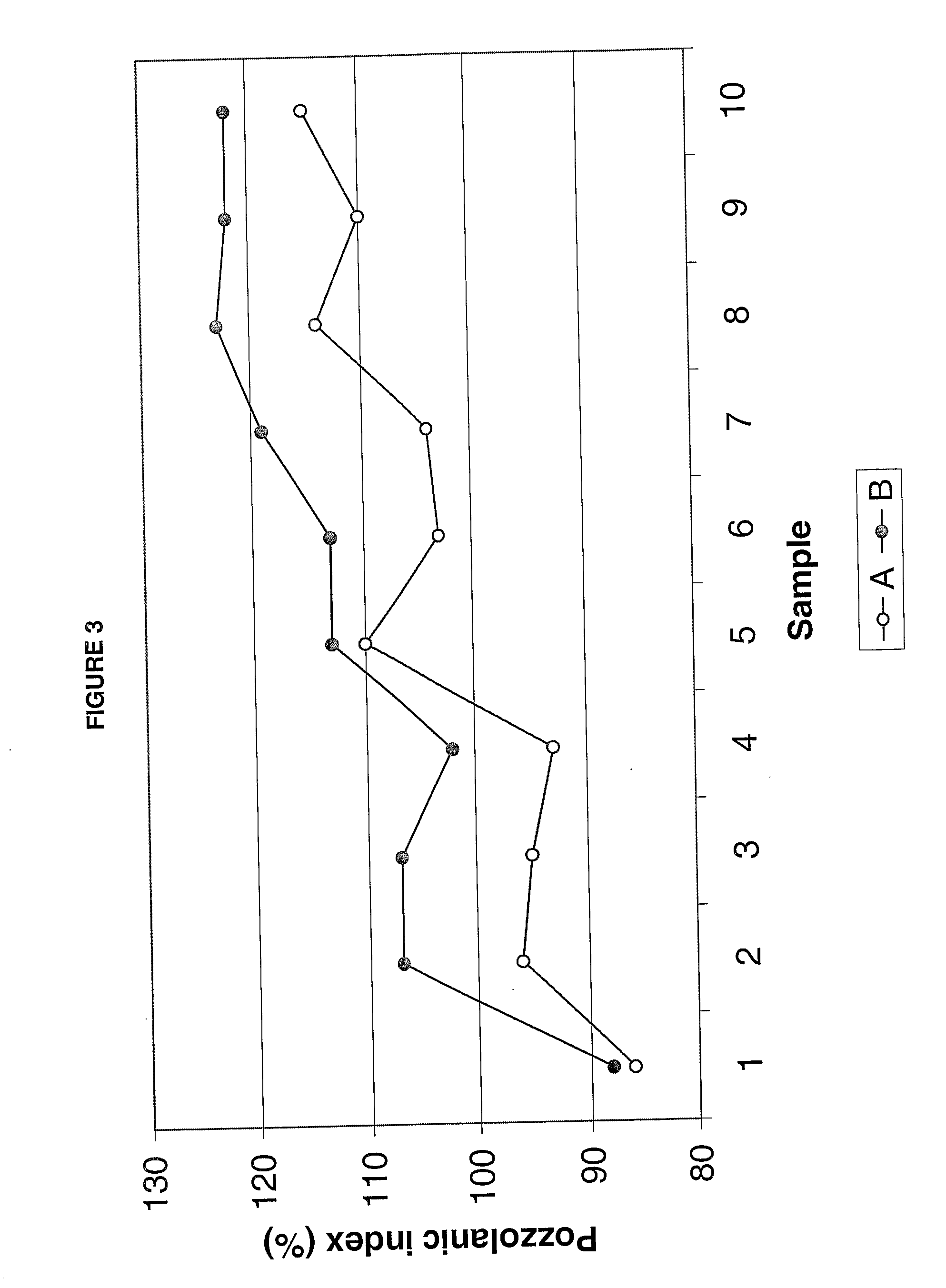Improved microsilica, its application like pozzolanic material and methods for its obtaining
a microsilica and pozzolanic material technology, applied in the field of microsilica, can solve the problems of reduced energy consumption for the manufacture of concrete and cement with improved properties, large amount of silica fume, and large amount of dust, and achieves a high compressive strength, good permeability, and improved cement abrasion index
- Summary
- Abstract
- Description
- Claims
- Application Information
AI Technical Summary
Benefits of technology
Problems solved by technology
Method used
Image
Examples
example 1
Obtaining of Raw Material
[0100] From a natural ignimbrite deposit located in the north of Mexico, diverse samples of rocky material were obtained; later, the material was put under chemical analysis to determine its composition. As it can be observed in table 2, the average content of silica in the rocky material was 92.14%, superior value that found in microsilica 600 and commercial silica fume and within the specifications according to ASTM C-1240.
TABLE 2RockyMicrosilicaSilicaASTMComponentsmaterial600fumeC-1240SiO2 [%]92.1487.8989.8985 minimumAl2O3 [%]1.24.310.10—Fe2O3 [%]0.130.590.20—CaO [%]0.660.320.37—MgO [%]000.34—K2O [%]0.030.490.60—Na2O [%]00.10.06—SO3 [%]0.050.130.16—PPI [%]3.20.81.53 maximumHumidity0.985.0146 maximum
[0101] Diverse representative samples were taken later from the ignimbrite deposit, which were investigated individually in their chemical composition by means of chemical analysis by x-rays fluorescence. As it can be observed in table 3, all the obtained sa...
example 2
Obtaining of the Pozzolanic Material
[0102] The material samples obtained in example 1 were transported from quarry to a cement processing plant. The samples were crushed later separately in a crushing jaw machine until obtaining a size smaller to ½″ and later they were put under calcination at 590 to 620° C. in a rotatory furnace during 1 hr. Later, the resulting materials along with a milling additive as for example Darex or triethanolamine, were worn out separately in a ball mill with separator during 30 minutes until obtaining a mesh particle size of 325 at 96% as minimum. The treated materials were placed in containers or plastic bags until their use.
example 3
Determination of the Pozzolanic Material Density
[0103] The density of the samples obtained in example 2 was determined using an Accupyc picnometer model 1330. The obtained results were compared with the density of the same samples but without calcination (crude samples). As it is observed in table 4 and in FIG. 1, in all cases the density of the samples of the pozzolanic material subject to calcination at 610° C., was greater than the density value of the corresponding sample without calcination; also substantial differences between the density values from different crude samples (from 2.23 to 2.59 g / cm3) and calcined samples were observed (from 2.27 to 2.63 g / cm3).
TABLE 4TrackDrill's largeDiamondType ofWitnessdrillslarge drillsSurface samplessampleCP12345678910Crude3.12.592.332.462.432.402.402.432.242.232.26Calcined—2.632.372.492.462.422.422.482.272.272.31
CP Portland cement.
PUM
| Property | Measurement | Unit |
|---|---|---|
| superficial area | aaaaa | aaaaa |
| particle size distribution | aaaaa | aaaaa |
| density | aaaaa | aaaaa |
Abstract
Description
Claims
Application Information
 Login to View More
Login to View More - R&D
- Intellectual Property
- Life Sciences
- Materials
- Tech Scout
- Unparalleled Data Quality
- Higher Quality Content
- 60% Fewer Hallucinations
Browse by: Latest US Patents, China's latest patents, Technical Efficacy Thesaurus, Application Domain, Technology Topic, Popular Technical Reports.
© 2025 PatSnap. All rights reserved.Legal|Privacy policy|Modern Slavery Act Transparency Statement|Sitemap|About US| Contact US: help@patsnap.com



